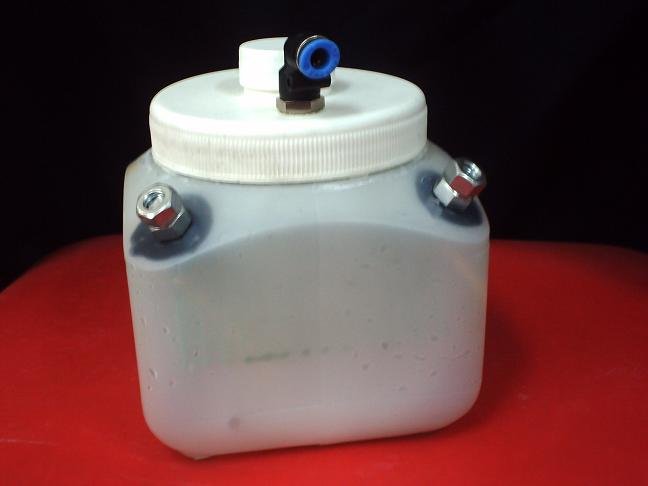With fuel prices soaring, sales of products designed to boost gas mileage are also rising - even though the US government says they're not worth the money.
The products range from devices that fit inside an engine's air intake valve to fuel additives. Their makers claim they boost mileage by helping gasoline burn more efficiently.
"The EPA (Environmental Protection Agency) has tested hundreds of these products," said Laura DeMartino, a Federal Trade Commission attorney. "Even for the few that worked, the gas savings was so small it didn't justify the price."
But that's not discouraging people from searching for ways to eke extra mileage out of their vehicles when gas prices are hovering above US$4 a gallon nationally.
"Our sales have probably close to doubled," over the past year, said Dan Baxley, founding partner of Automotive Research Laboratory LLC, which makes the Vortec Cyclone, a device designed to boost gas mileage by improving an engine's air flow.
 Dan Baxley and the Vortec Cyclone. Sounds like a good name for a band. - AP Photo.
Dan Baxley and the Vortec Cyclone. Sounds like a good name for a band. - AP Photo.
The US$40 device fits inside a car's air intake hose, where it, "creates a swirling mass like a tornado," Baxley said. That creates a finer gas-air mix than normal, which burns more efficiently. Some Vortec Cyclone users have claimed a benefit of as much as 6mpg, though most see an improvement of one to 2mpg, Baxley said.
Kevin Shaw, vice president of development at The Coffee Beanery, has tested it on four of his company's vehicles. The coffee chain found that it improved the performance of two of his service vans by 2mpg, while one passenger car's fuel efficiency rose by 1mpg. The fourth car saw no improvement, but Shaw said three out of four is enough to convince him that the device is well worth the money.
"I have nine on order right now," said Shaw, who believes the devices will save his company at least US$1,400 a year per vehicle in fuel expenses.
Like other companies that sell gas-mileage-improvement products, Baxley is used to skepticism.
He says his company's tests prove that the Vortec Cyclone improves gas mileage, and Automotive Research Laboratory backs its product up with a money-back guarantee. Returns run only around 5% of sales, he said.
Automotive Research Laboratory has never received a complaint from the FTC, which declined to comment on specific products.
National Fuelsaver Corp, which makes Platinum Gas Saver, can improve fuel mileage by 22%, said company owner and technical director Joel Robinson. The product, which the company started selling nearly 30 years ago, injects a small amount of platinum into a vehicle's air intake system. The platinum molecules boost the amount of fuel burned by the engine, company press materials say. The remainder is expelled as vapour and burned off by the catalytic converter.
Robinson said he has been contacted by the FTC and some state attorneys general. But he's been able to defend his product thanks to his victory in an early 1980s lawsuit brought by the US Post Office, which said he was trying to obtain money through the mail by making false claims.
"They all thought we were frauds until I sent them the judge's decision," Robinson said.
Robinson produced data that, he says, show Platinum Gas Saver works. But he also notes that - aside from his product - there is merit to the FTC's warnings.
"Except for ours, I think there's a lot of truth to it," Robinson said. "The problem in selling this product is that in the last 10 years there have been 10,000 phony fuel savers."
Platinum Gas Saver costs US$150 for a 30,000 mile supply. Robinson declined to disclose annual sales.
Another company, Magnetizer Industrial Technologies Inc, has stopped selling a US$150 gas-savings device to the general public, citing high costs to fulfill individual orders and the general skepticism that surrounds any kind of magnetic gas savings device.
"There is a technology here that can benefit," said Ron Kita, director of research, but "there has been a lot of negative press."
Magnetizer's magnets work by changing naturally formed chemical associations, "into a single, potentiated molecular state," which burns more efficiently, the company's website explains. The company still sells the system to fleet operators as an emissions reduction device.
The US government's advice to people looking to save on gas, however, is simple enough: Drive the speed limit, use cruise control, combine errands and remove excess weight from the trunk. - AP

